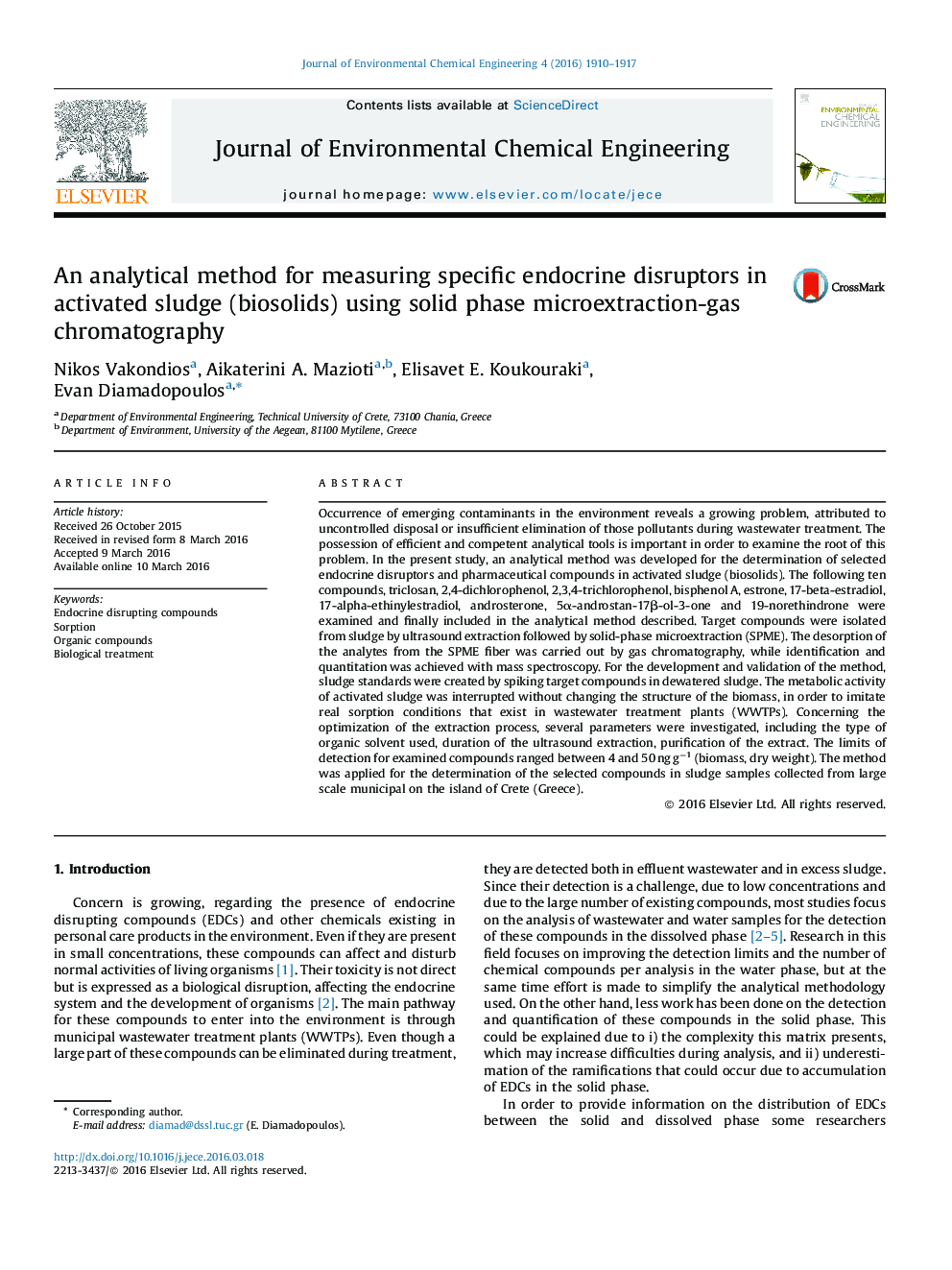| Article ID | Journal | Published Year | Pages | File Type |
|---|---|---|---|---|
| 221671 | Journal of Environmental Chemical Engineering | 2016 | 8 Pages |
•EDCs extracted from biosolids by ultrasound.•Solid Phase Microextraction direct extraction.•Creation of standards using fresh, de-activated sludge.•Fast, efficient method applied to biosolids.
Occurrence of emerging contaminants in the environment reveals a growing problem, attributed to uncontrolled disposal or insufficient elimination of those pollutants during wastewater treatment. The possession of efficient and competent analytical tools is important in order to examine the root of this problem. In the present study, an analytical method was developed for the determination of selected endocrine disruptors and pharmaceutical compounds in activated sludge (biosolids). The following ten compounds, triclosan, 2,4-dichlorophenol, 2,3,4-trichlorophenol, bisphenol A, estrone, 17-beta-estradiol, 17-alpha-ethinylestradiol, androsterone, 5α-androstan-17β-ol-3-one and 19-norethindrone were examined and finally included in the analytical method described. Target compounds were isolated from sludge by ultrasound extraction followed by solid-phase microextraction (SPME). The desorption of the analytes from the SPME fiber was carried out by gas chromatography, while identification and quantitation was achieved with mass spectroscopy. For the development and validation of the method, sludge standards were created by spiking target compounds in dewatered sludge. The metabolic activity of activated sludge was interrupted without changing the structure of the biomass, in order to imitate real sorption conditions that exist in wastewater treatment plants (WWTPs). Concerning the optimization of the extraction process, several parameters were investigated, including the type of organic solvent used, duration of the ultrasound extraction, purification of the extract. The limits of detection for examined compounds ranged between 4 and 50 ng g−1 (biomass, dry weight). The method was applied for the determination of the selected compounds in sludge samples collected from large scale municipal on the island of Crete (Greece).
